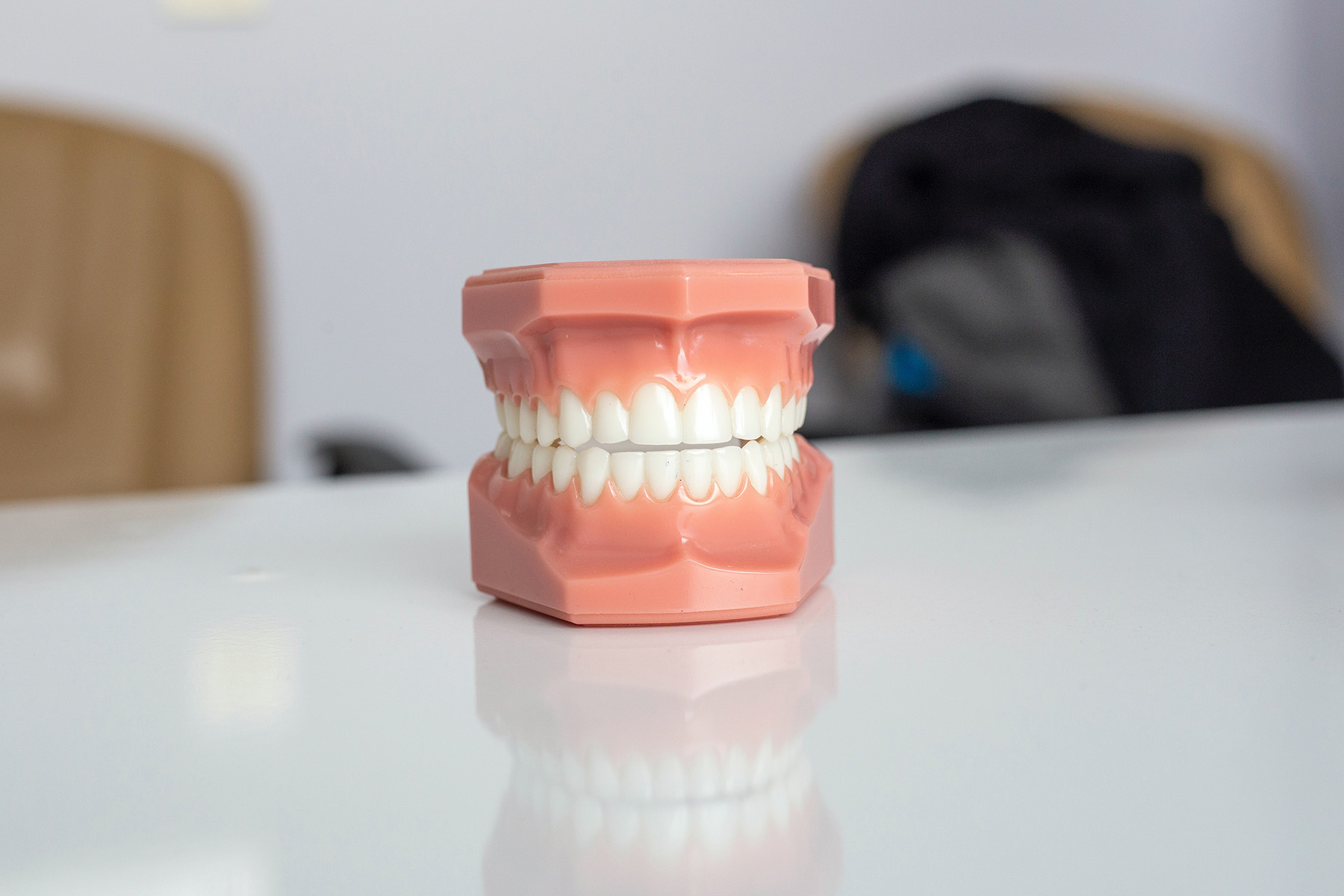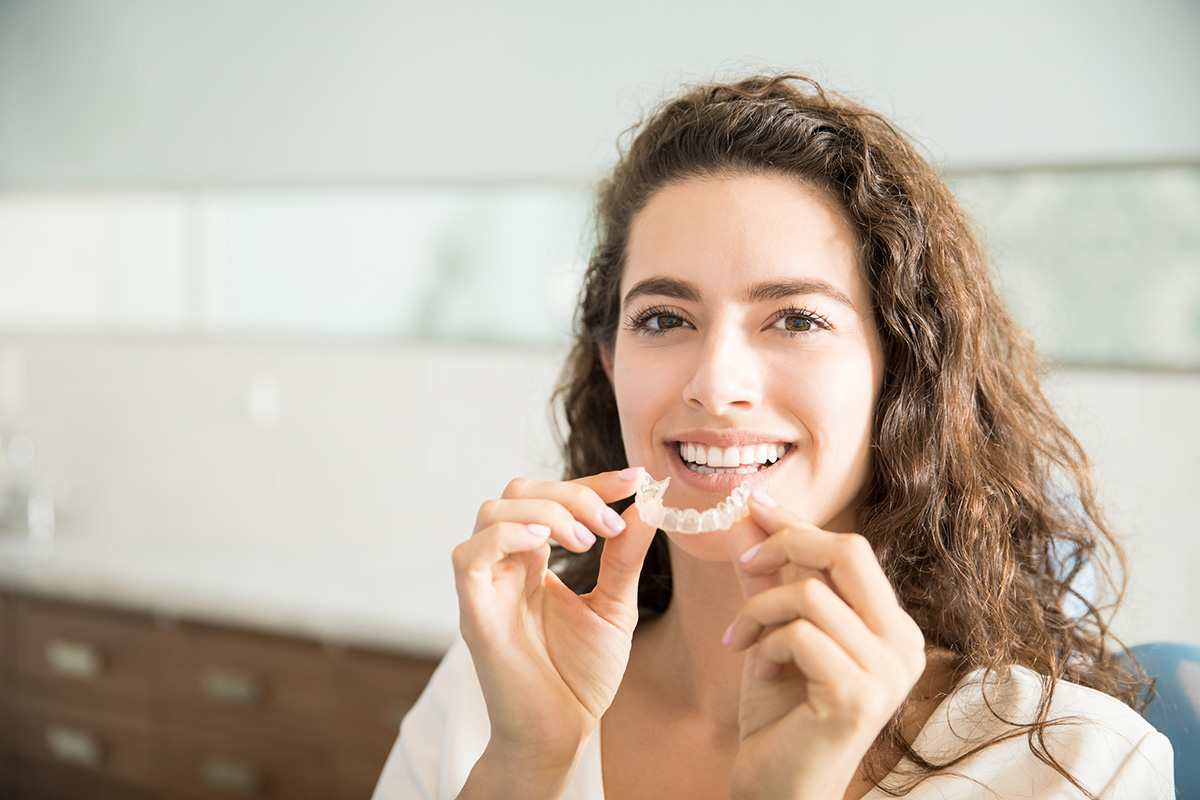A Clear Path to a Perfect Smile
What are transparent braces?
Transparent braces, commonly referred to as clear aligners or Invisalign, are removable, nearly invisible trays designed to gradually shift teeth into proper alignment. These braces are made from a medical-grade, BPA-free plastic material. Whether you’re a teen or an adult, clear aligners like Invisalign provide an invisible way to perfect your smile, ensuring a comfortable and aesthetic alternative to metal braces.
Who are Transparent Braces for?
You are never too old to achieve a beautiful, healthy smile. People of any age are encouraged to consult with an orthodontist to consider treatment options. For those interested, transparent braces are best for patients who have mild to moderate crowded teeth or bite issues. Patients also need to be committed to wearing their aligners 20 – 22 hours a day.
Only an orthodontist can provide a comprehensive array of treatment options for patients. Treatment can last on average 2 – 3 years1 so be sure that your time and money is best spent with a trusted local orthodontist. If you aren’t sure if transparent braces are the right choice, consult a local trusted orthodontist expert.



What is the process for Transparent Braces?
Step 1 : Consult Orthodontist
Your journey begins with an initial consultation to evaluate needs and treatment goals.
Step 2 : Treatment Plan
Using advanced technology, a digital scan predicts how your teeth will move over time.
Step 3 : Custom Aligners Created
Custom transparent braces aligners are created using clear, durable material.
Step 4 : Wearing Aligners
Clear brace aligners are worn most of the day except eating or brushing, and sets are changed periodically.
Step 5 : Regular Checkups
Periodic orthodontist appointments every 6-8 weeks to track progress and make adjustments.
Step 6 : Wear Retainer
Once done with clear aligners, retainers will help maintain your beautiful new smile.
Benefits of Transparent Braces
✅ Virtually Invisible
✅ Comfortable & Removable
✅ Fewer Office Visits
✅ No Dietary Restrictions

Orthodontic FAQs
Answers to common questions about transparent braces, braces price, and more.
What is the cost of transparent braces?
Orthodontic treatment and braces price depend on a variety of factors such as recommended treatment, where the patient lives, and severity of bite / teeth alignment issues.
Most estimates place the costs somewhere between $4,000 – 7,000. Many dental insurance plans cover part of the cost of clear aligners. Flexible payment plans and financing options are often available.
Good Hygiene Habits: Education on brushing techniques, the importance of fluoride, and dietary recommendations to promote healthy teeth.
Warm Environment: Pediatric dentists are skilled in managing the behavior of young patients and creating a comfortable, child-friendly environment.
Affording the Best Care
Our Great Smiles team works to find the best way to fit great dental care into your budget, with awesome payment options, maximized insurance benefits, and affordable solutions. Our FAQ pages have some answers to common questions about Invisalign or braces costs as well as dentist costs. Or, feel free to contact us for help. Plus, research shows that early dental visits can lower long-term costs, so we encourage families to come visit us at one of our five Great Smiles Pediatric Dentistry and Orthodontics locations.
Patient Reviews
What to do in Meantime
Sometimes you might not be able to get to see an emergency pediatric dentist right away. We’ve got some important tips for the most common emergencies here!
Your Title Goes Here
Your content goes here. Edit or remove this text inline or in the module Content settings. You can also style every aspect of this content in the module Design settings and even apply custom CSS to this text in the module Advanced settings.
Knocked-Out Tooth
First, find the tooth. Always handle the tooth by the crown (that’s the big chewing part) and not the roots (the pointy side). You can rinse it off, but don’t handle it unnecessarily. After inspecting the tooth for fractures, you can try to reinsert the tooth into the socket if it’s undamaged (have your child bite down on gauze to keep it in place). If you can’t reinsert it, place the tooth in a cup of milk until you can see us. While baby teeth are not usually replaced, we recommend seeing your pediatric dentist ASAP!
Broken Tooth
Use warm water to rinse the injured area and apply a cold compress over the face. Find and save any pieces of the broken tooth that you can, and call your dentist for immediate treatment.
Cut or Bitten Tongue, Lip, or Cheek
Apply ice to bruised areas and apply firm pressure with a gauze or a cloth to areas that are bleeding. If the bleeding doesn’t stop after 15 minutes (or it doesn’t respond to applied pressure), head to the hospital emergency room.
Toothache
Toothaches are the worst, and you’ll want to make an appointment with your pediatric dentist since there could be decay, infection, or worse! To help with the toothache, clean the affected tooth thoroughly and rinse with warm water. You can use dental floss to remove any impacted food or debris. DO NOT place aspirin on the gum or tooth! If the face is swollen, use a cold compress to relieve some of the pain.
No matter what, you’ll want to take your child to the pediatric dentist as soon as possible if you have any of these dental emergencies. Even if you can’t get to the doctor right away, make an appointment for follow-up care or treatment for your little one.



